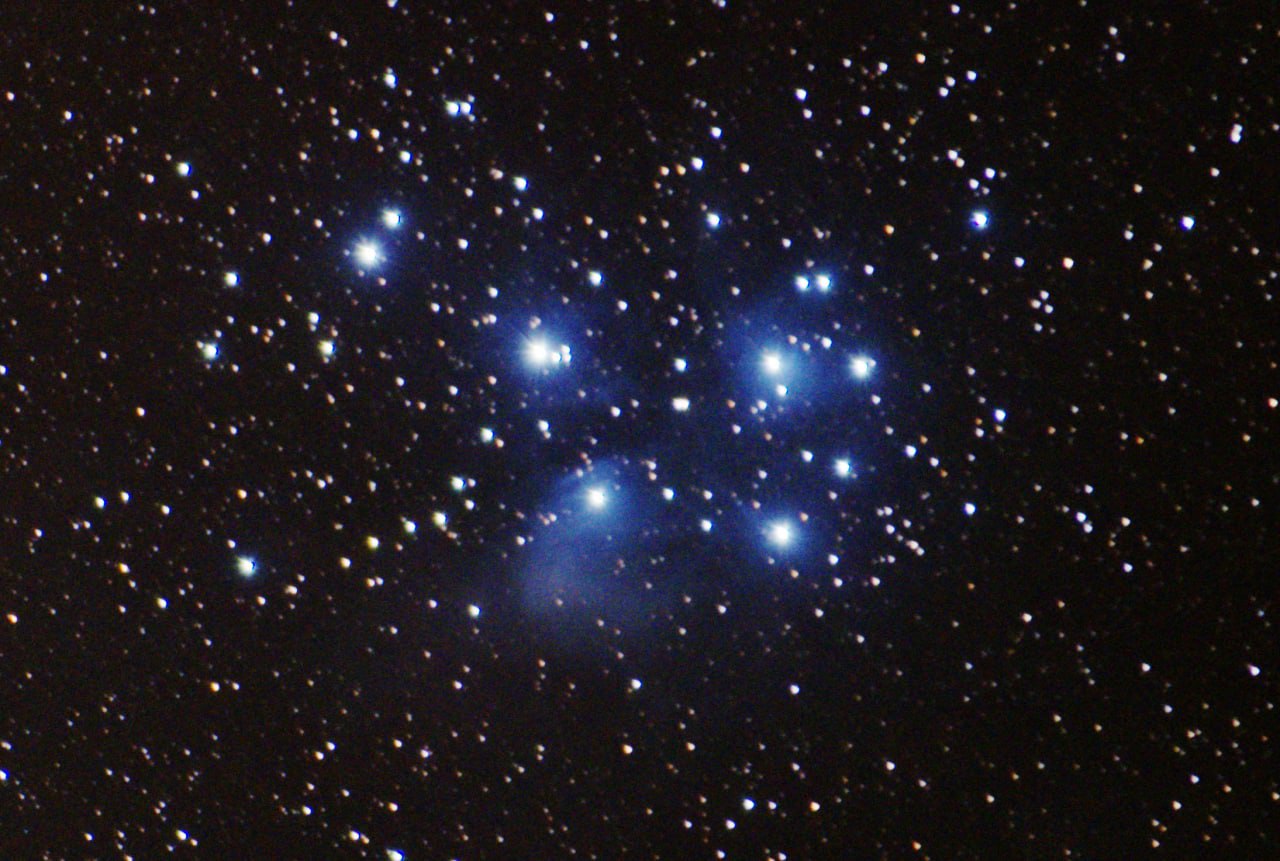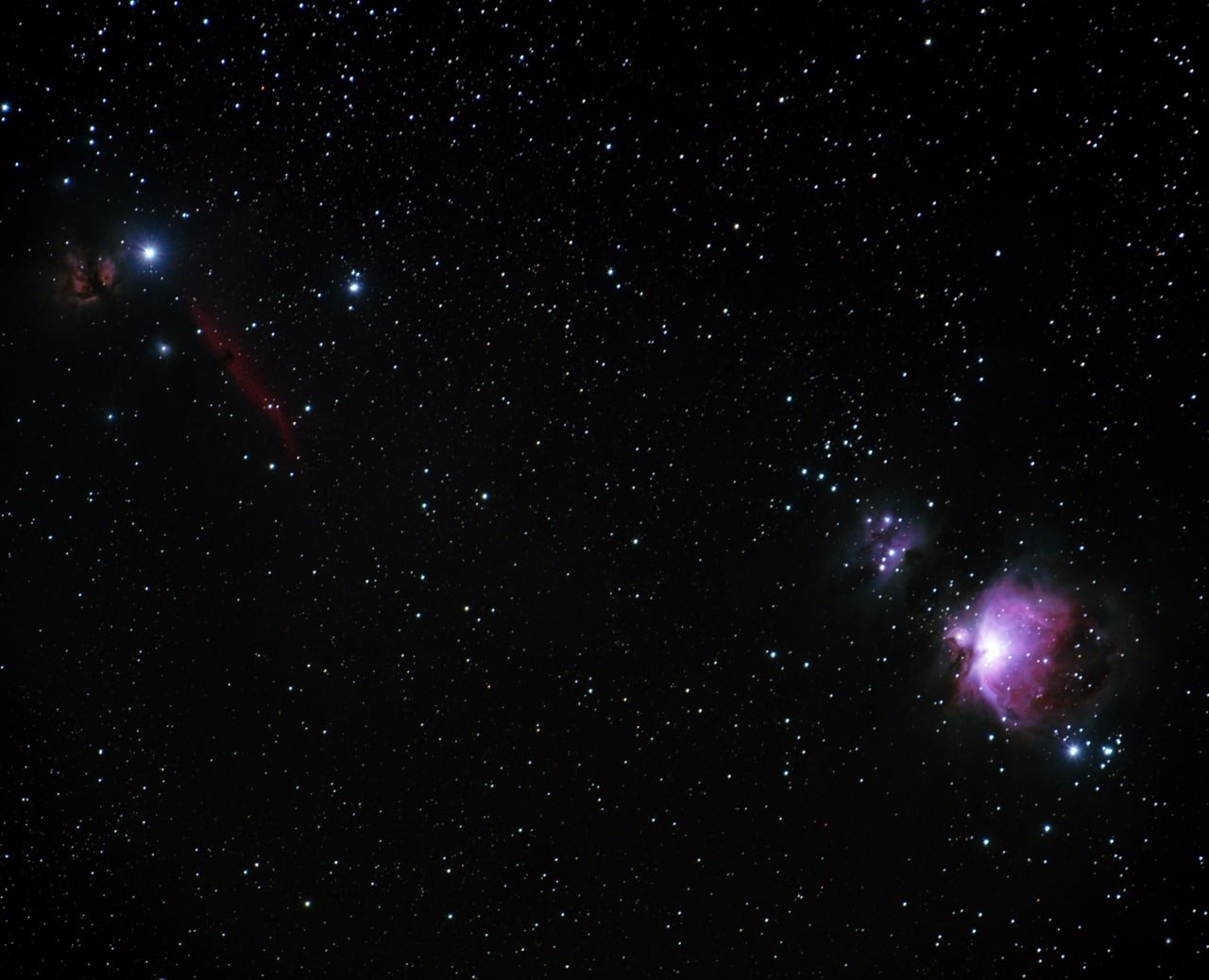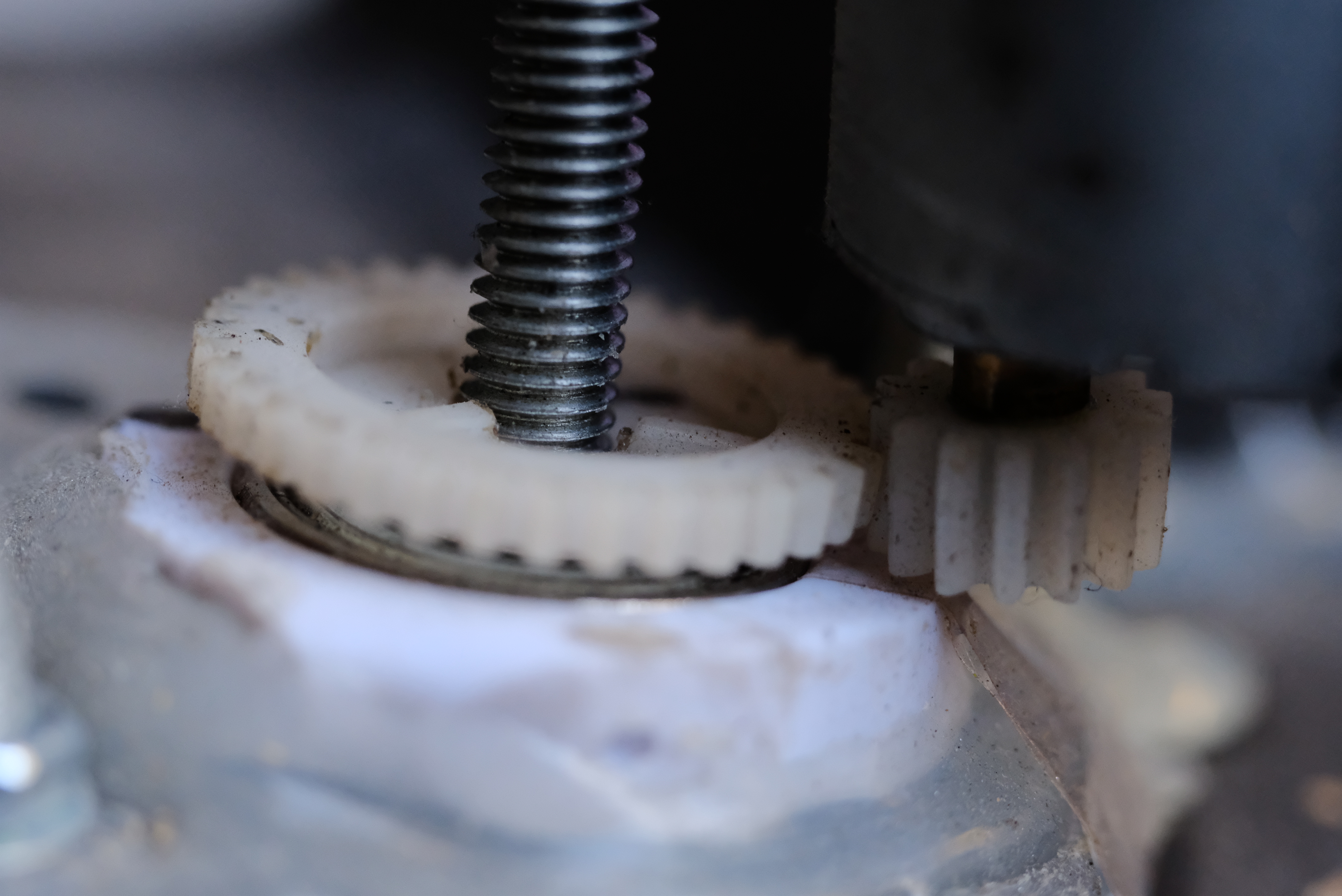
Since when I remember I was fascinated about space and astrophotography. As a kid I often looked through the Hubble photos of galaxies and sky maps wondering how amazing it would be if I could make a photo of a visible deep-sky object with my own gear.
The dream came through at the moment I bought Fujifilm XT-20 camera and borrowed a Nikon lens with focal length of 220mm.
 This is my first photo of andromeda, taken without any tracker. It did not satisfy me, because I wanted to make as high quality photo as possible with my borrowed lens. Sky tracking turned out to be the biggest issue here.
This is my first photo of andromeda, taken without any tracker. It did not satisfy me, because I wanted to make as high quality photo as possible with my borrowed lens. Sky tracking turned out to be the biggest issue here.
I quickly came across astrojawil website and realized that tracking issue can be partially fixed by a DIY construction, and started working on my own, hand-powered wooden tracker.
This is something I came up with after a couple of days:
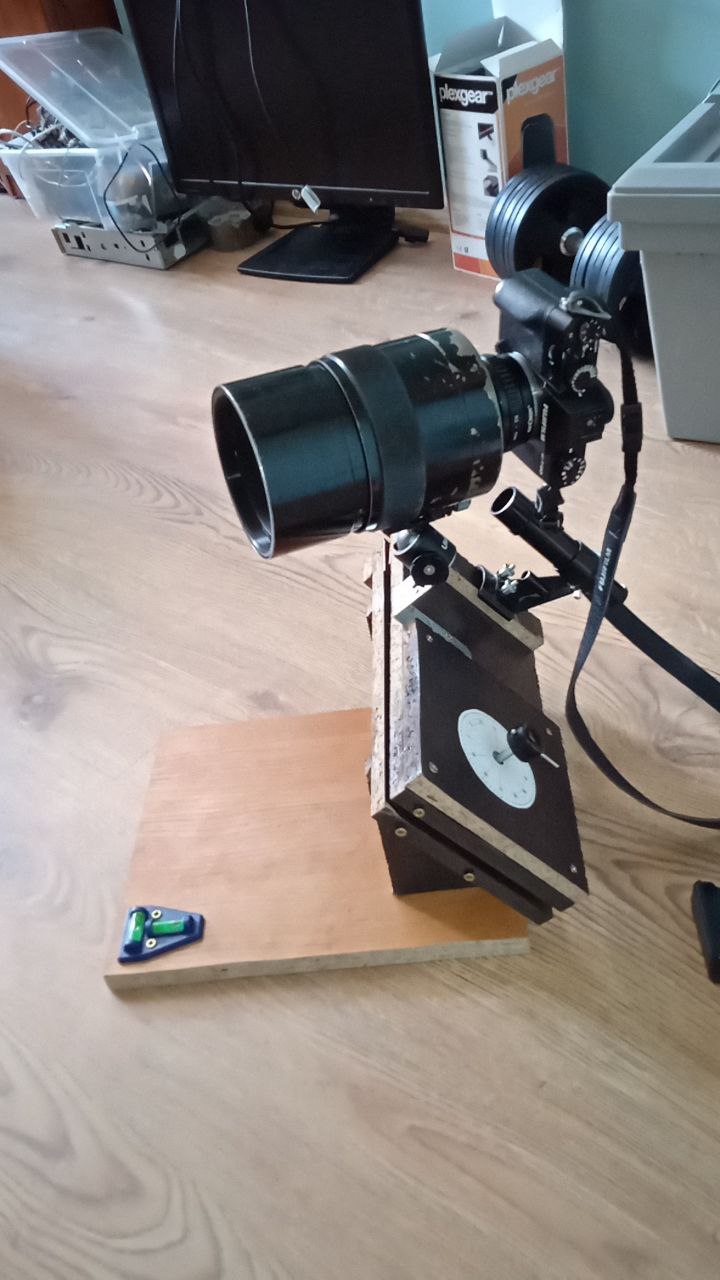
The most important part of this design are two layers of wood, connected by a hinge. To properly track the night sky, they have to be aligned with the Polaris star and slowly lift the camera as the Earth rotates.
The only part of this construction I've paid for is the 20$ ball-mount.
I unfortunately don't have any other photos of that version, but in general you were meant to turn the screw at the calculated speed, so that the upper slice of wood lifts the camera as tracker follows the night sky.
That construction had many issues though, the screw often jammed and hand-movements always generated some unwanted vibrations. As the wooden platforms moved away from themselves, speed of turning the screw should also have been increased (the further from the lower platform the screw was, the the bigger was an angle between it and lower platform). This was not a big issue, because this design is not expected to be that accurate. But I decided to tweak this anyways and installed a Atmega 328p powered step motor.
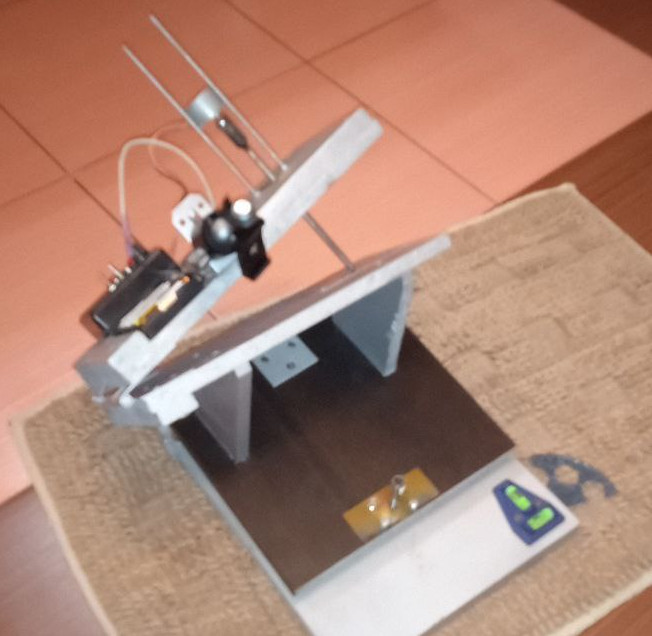
This design could operate much longer than a hand-powered screw because of the longer screw and turned out to be very convinient. It was powered by 4 AA batteries - this turned out to be a really weak power supply.
As you may have noticed, I installed an additional lower platform underneath, that allowed to fine-calibrate angle for my local latitude with a screw.
At this point, I made some photos with it and the low-class hinges turned out to be the biggest problem, and hard to calibrate.
Anyways, I started working on the next version, which would rely on a threaded gear, rotating around a bent screw. Gear would bear the whole weight of the upper platform, including camera. Following photos were made at the time of writing this post. They show some technical details and how the tracker is assembled.
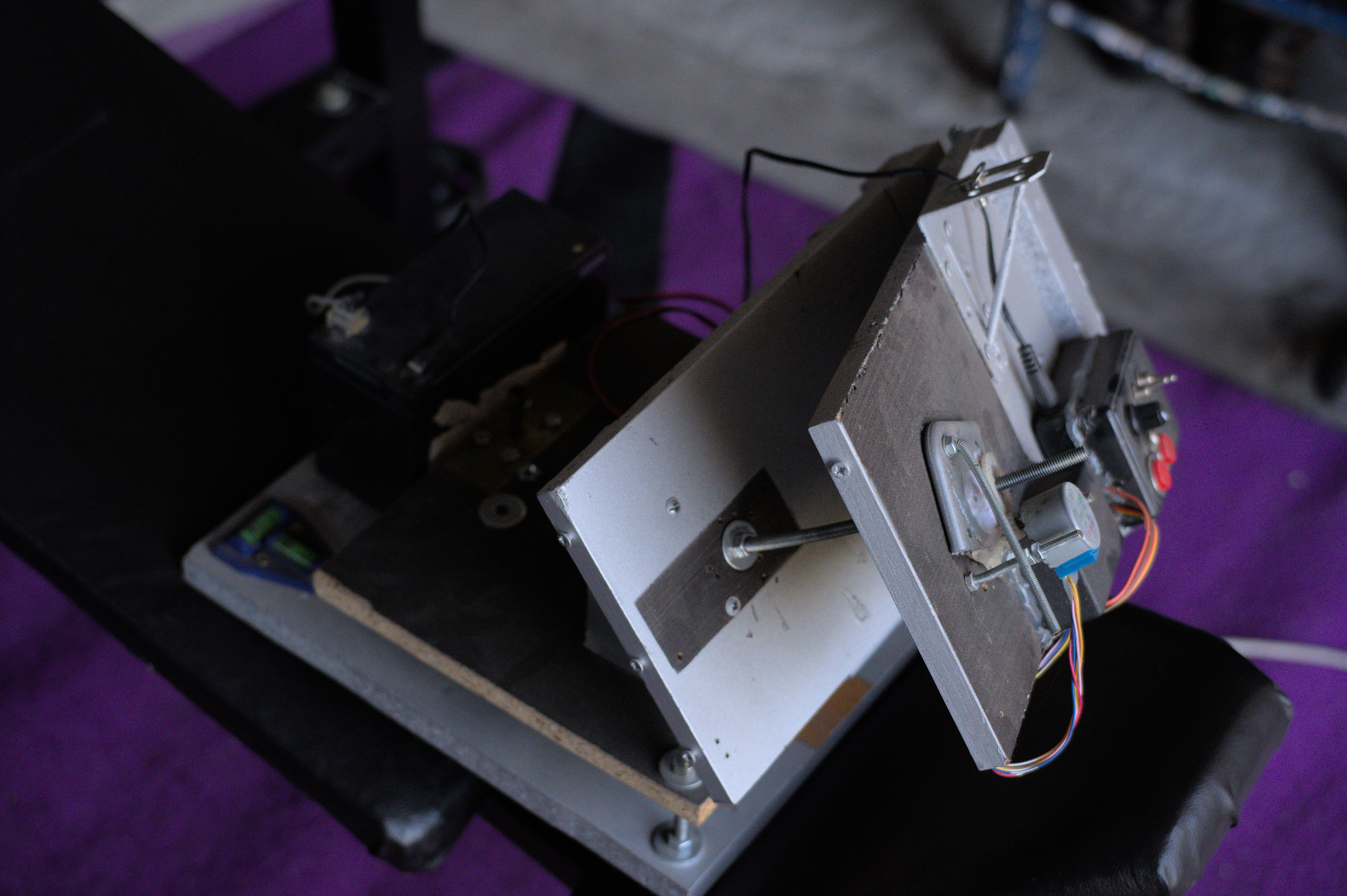
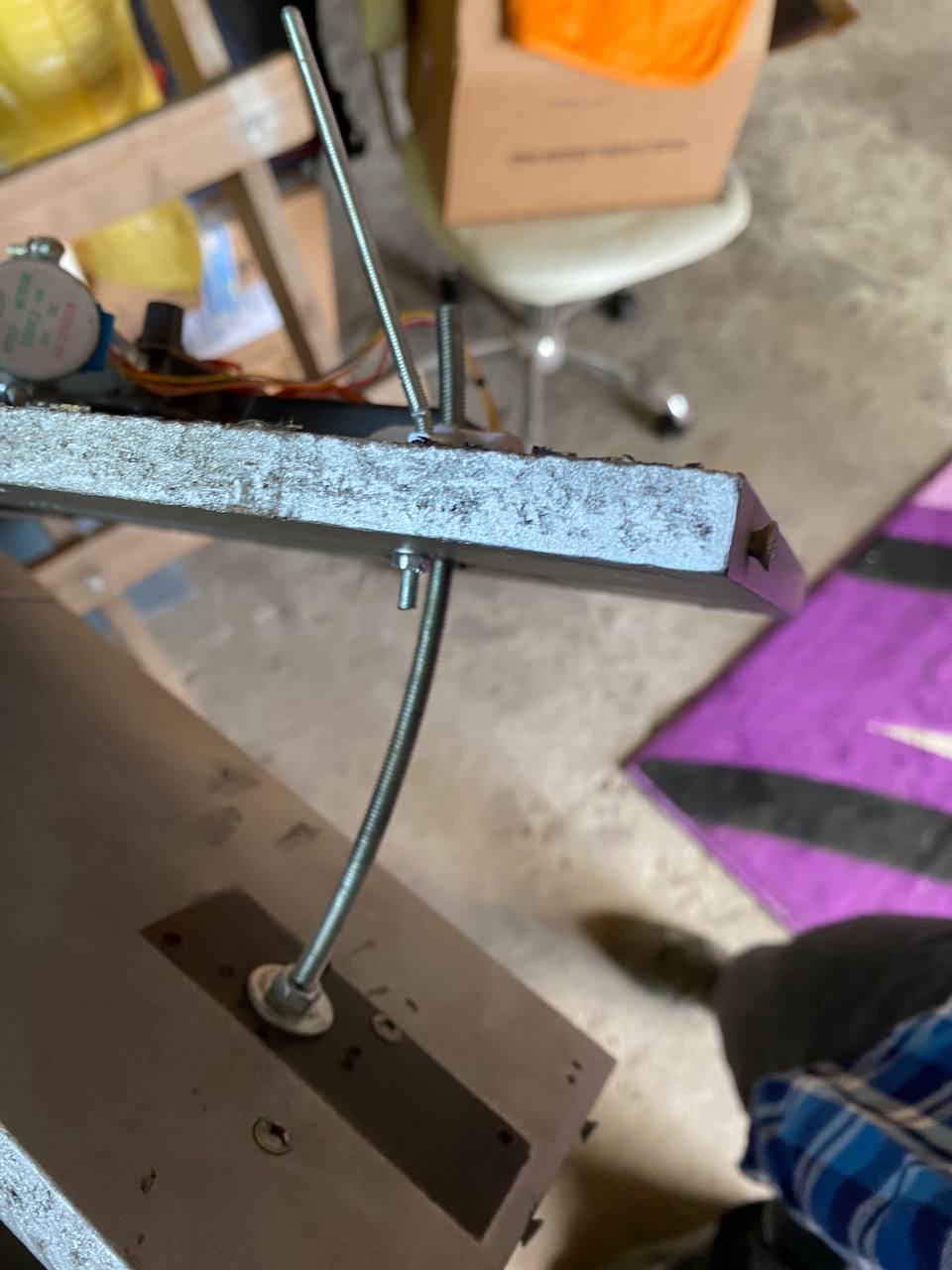
The curvature of the screw is clearly visible in the above photo. Below, you can see bearing, to which I glued a screw nut.
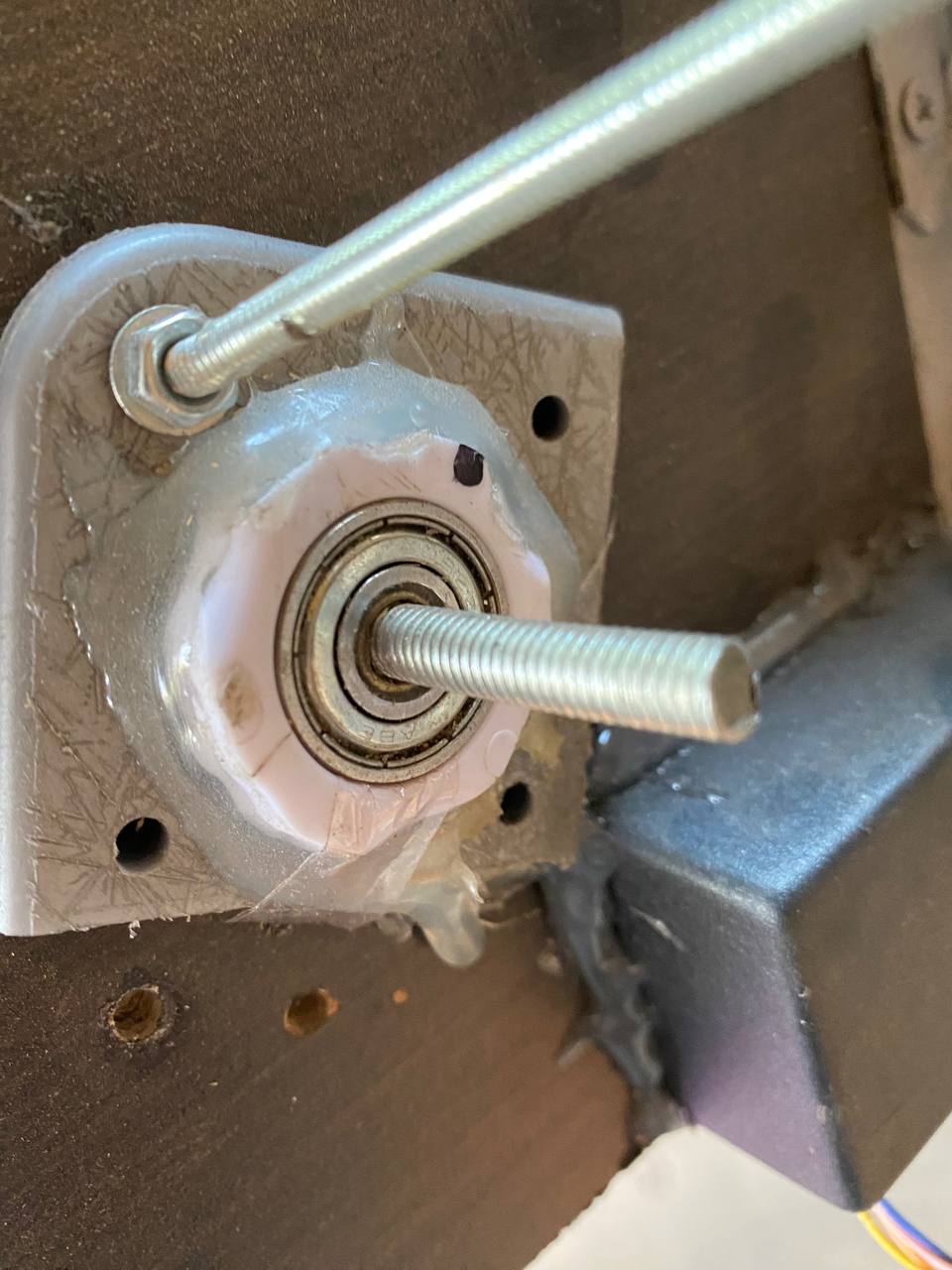
Gear for the step motor was glued directly to the threaded screw nut I mentioned in the previous paragraph.
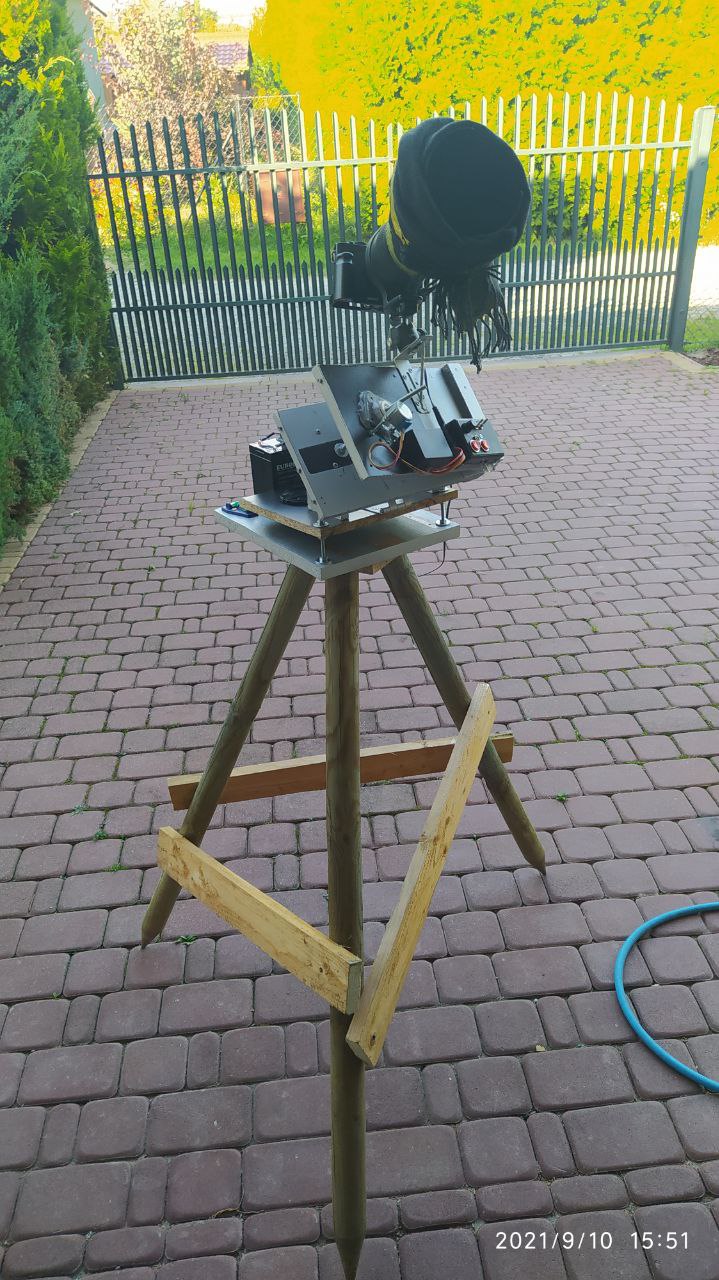
I also made a simple and stable tripod.
Below are two and only photos I was satisfied with. I'm sure that the Pleiades would have come out better if I had more material and calibrated the tracker better. Orion photo from the thumbnail was cut from the last photo.
